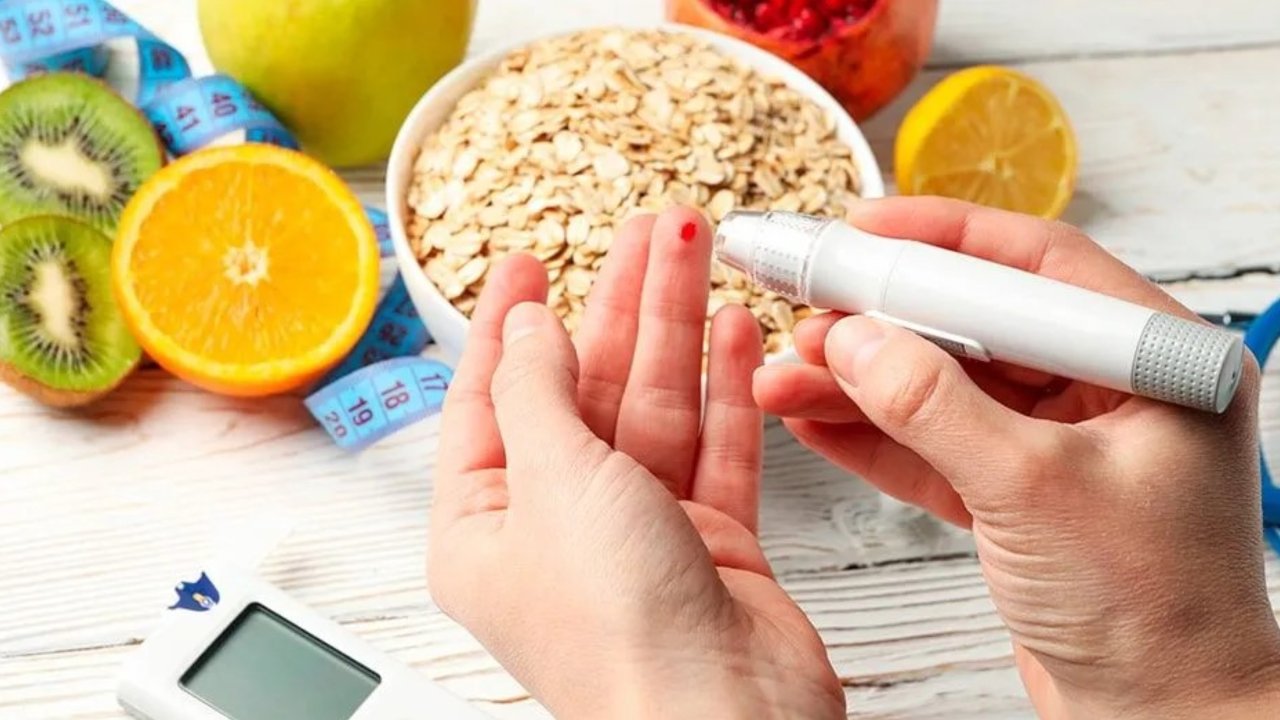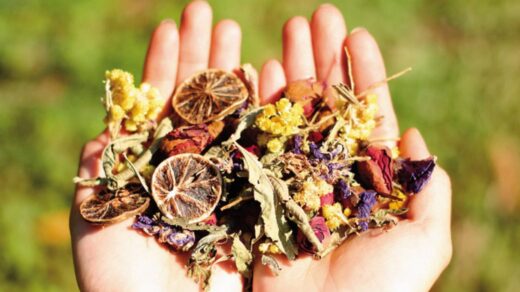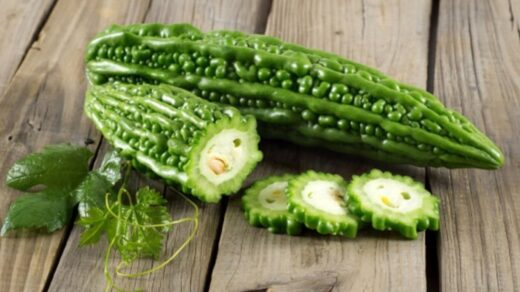Ayurvedic Dietary Guidelines for Managing Type 2 Diabetes
In Ayurveda, diabetes is referred to as Madhumeha, which is derived from the Sanskrit words “Madhu” (meaning sweet) and “Meha” (meaning urination). The condition is characterized by frequent urination with a sweet smell, similar to how Type 2 Diabetes is defined in modern medicine—an issue related to improper regulation of blood sugar.
Ayurveda perceives Madhumeha not as a single disease but as a metabolic disorder that stems from an imbalance in the body’s systems, affecting the digestive and elimination processes. This imbalance leads to the accumulation of toxins (ama), and the tissues (dhatus) in the body fail to absorb nutrients properly. Over time, this results in high blood sugar and a series of related symptoms.
How Ayurveda Views Diabetes as a Metabolic Disorder
In Ayurveda, the body is understood through the interplay of three doshas—Vata, Pitta, and Kapha—each of which governs specific physiological functions. The balance or imbalance of these doshas determines an individual’s health and well-being. When Madhumeha is present, Ayurveda sees it as a metabolic dysfunction, primarily affecting the digestive fire (Agni), which is responsible for the breakdown of food and conversion into usable energy.
Diabetes (Madhumeha) is often linked to impaired Agni (digestive fire), which fails to process food efficiently, leading to the accumulation of waste products (ama) in the tissues, which can block the natural flow of energy and cause diseases like diabetes.
Role of Imbalanced Doshas in Diabetes
Each of the three doshas—Vata, Pitta, and Kapha—can influence the development of Madhumeha in unique ways.
Vata Dosha:
- Vata governs movement in the body, including the circulation of blood, the excretion of waste, and nerve function. An imbalance in Vata can lead to dryness, weakness, and erratic digestion, which disturbs the normal absorption of nutrients and contributes to the development of Type 2 Diabetes.
- Vata imbalance is often associated with unpredictable blood sugar fluctuations, poor circulation, and nerve damage, which are common complications of diabetes.
Pitta Dosha:
- Pitta governs the metabolism, digestion, and transformation processes in the body. When Pitta is out of balance, it can lead to excessive heat, inflammation, and acidity, impairing the function of the pancreas and liver.
- This imbalance may cause increased blood sugar levels, leading to symptoms like excessive thirst and hunger often seen in diabetes.
- Additionally, Pitta imbalance can lead to anger, irritability, and stress, which may exacerbate blood sugar control.
Kapha Dosha:
- Kapha governs structure, stability, and lubrication in the body. An imbalance in Kapha is often linked to obesity, sluggish digestion, and the accumulation of toxins (ama).
- A Kapha imbalance contributes to insulin resistance and weight gain, which are major risk factors for Type 2 Diabetes. Additionally, excess Kapha can lead to slower metabolism and difficulty in properly processing food, resulting in high blood sugar levels.
Ayurvedic Approach to Managing Blood Sugar Levels
Ayurvedic treatment for Madhumeha involves balancing the doshas to restore harmony in the body, improve digestion, and detoxify. Here are some key strategies:
Dietary Recommendations:
- Ayurveda emphasizes fresh, warm, and easy-to-digest foods while avoiding heavy, processed, or sugary foods. Foods that reduce Kapha and improve Pitta (like bitter greens, vegetables, legumes, and whole grains) are considered ideal.
- Bitter-tasting foods (such as bitter melon, turmeric, and fenugreek) are beneficial for managing blood sugar levels.
- Small, frequent meals are encouraged to maintain a steady flow of energy and avoid blood sugar spikes.
Ayurvedic Dietary Principles for Diabetes Management
In Ayurveda, diet is one of the most important factors in maintaining health and managing conditions like diabetes (Madhumeha). A diet that supports the balance of the doshas and optimizes Agni (digestive fire) is critical for regulating blood sugar levels. The Ayurvedic approach to diet isn’t just about what you eat but how and when you eat. Below are key principles for managing diabetes through diet according to Ayurveda:
1. The Importance of a Sattvic Diet
In Ayurveda, food is categorized into three gunas: Sattvic, Rajasic, and Tamasic. A Sattvic diet is considered the healthiest and most balanced for both body and mind.
- Sattvic foods are fresh, pure, light, and nourishing. They promote mental clarity, emotional stability, and spiritual well-being.
- A Sattvic diet is free from processed, artificial, or overly stimulating foods and focuses on whole, natural ingredients such as fruits, vegetables, whole grains, legumes, and nuts.
For diabetes management:
Sattvic foods help balance the Kapha and Pitta doshas, which are often imbalanced in people with Type 2 Diabetes. They are easy to digest and promote optimal functioning of Agni (digestive fire).
A Sattvic diet includes low glycemic foods that do not spike blood sugar, such as:
- Leafy greens
- Bitter vegetables (like bitter melon)
- Whole grains (like barley, quinoa, and oats)
- Fresh fruits (in moderation, such as berries, apples, and pomegranates)
- Legumes and lentils (for balanced protein intake)
- Nuts and seeds (for healthy fats)
The focus on fresh, seasonal, and local food also ensures that the body receives the most appropriate nutrition for the time of year and environment.
2. Balancing Kapha Dosha to Control Diabetes
Since Kapha dosha is most often out of balance in people with Type 2 Diabetes, a diet focused on reducing excess Kapha is key for diabetes management. An imbalance in Kapha is linked to insulin resistance, weight gain, and sluggish metabolism.
To balance Kapha, the Ayurvedic diet should include:
- Light, warm, and dry foods: These foods stimulate digestion and prevent the accumulation of excess fat, a primary concern in diabetes.
- Bitter, astringent, and pungent tastes: These tastes naturally help reduce excess Kapha and improve metabolism. Foods like ginger, garlic, and turmeric are highly recommended.
- Avoiding heavy, oily, and sweet foods: These foods exacerbate Kapha and contribute to obesity and sluggish digestion.
Foods to emphasize for balancing Kapha:
- Warm soups and broths made from vegetables and legumes
- Spices like black pepper, cumin, turmeric, and fenugreek, which enhance metabolism
- Bitter greens, such as dandelion, kale, and spinach
By balancing Kapha, the body will have more regulated blood sugar and better insulin sensitivity.
3. Role of Agni (Digestive Fire) in Metabolism
In Ayurveda, Agni, or digestive fire, is crucial to the overall metabolism of the body. When Agni is strong, food is digested properly, nutrients are absorbed, and waste products are eliminated effectively. This balance ensures optimal blood sugar regulation.
For diabetes management:
If Agni is weak or impaired, digestion becomes inefficient, leading to the accumulation of ama (toxins) and imbalanced blood sugar. In the case of Type 2 Diabetes, this often manifests as slow metabolism, fatigue, and poor absorption of nutrients.
To optimize Agni, Ayurveda recommends:
- Consuming warm, cooked foods rather than cold or raw foods, as they are easier to digest and stimulate digestive fire.
- Eating simple, balanced meals that are not too heavy or overly complex, allowing Agni to work more effectively.
- Avoiding overeating and eating in moderation, as excess food burdens the digestive system and dampens Agni.
- Drinking warm water or herbal teas such as ginger tea before and after meals to stimulate digestion.
For maintaining strong Agni and efficient metabolism:
- Cumin, coriander, and fennel seeds are often used as digestive aids in Ayurvedic cooking.
- Spices like turmeric, ginger, and black pepper help to kindle Agni and stimulate digestion.
4. Eating According to Prakriti (Body Constitution)
In Ayurveda, Prakriti refers to your unique body constitution, which is a combination of the three doshas—Vata, Pitta, and Kapha. Every individual has a dominant dosha, and understanding your Prakriti helps tailor your diet to best support your health and manage conditions like diabetes.
- Vata-predominant individuals tend to have dry, erratic digestion and need a diet that is warm, moist, and grounding. They should avoid excessively dry or cold foods, and emphasize cooked, nourishing meals like soups, stews, and steamed vegetables.
- Pitta-dominant individuals tend to have a strong metabolism but can suffer from overheating, inflammation, and acidity. They should favor cooling foods like cucumbers, mint, and leafy greens while avoiding spicy, oily, and acidic foods that can aggravate Pitta.
- Kapha-dominant individuals tend to have a slow metabolism and may be prone to obesity and weight gain. They benefit from light, stimulating foods that promote digestion and reduce fat, such as spicy vegetables, legumes, and warming herbs.
Prakriti-based dietary guidelines help to ensure that your diet is not only appropriate for diabetes but also tailored to your specific metabolic needs, ensuring better results and well-being.
Key Ayurvedic Dietary Tips for Managing Diabetes
- Eat according to the seasons: Ayurveda recommends adjusting your diet based on the changing seasons. In winter, favor warming, grounding foods, while in summer, opt for cooling and hydrating foods.
- Avoid processed sugars and artificial sweeteners: These disrupt digestion and exacerbate insulin resistance.
- Eat mindfully: The practice of mindful eating—eating slowly and without distractions—helps to improve digestion and absorption, promoting better blood sugar regulation.
- Support liver and kidney function: Foods that aid in detoxification, such as dandelion, beets, and turmeric, support the body’s natural detox pathways and assist in managing diabetes.
Best Ayurvedic Foods for Type 2 Diabetes
Ayurveda offers a holistic approach to managing Type 2 Diabetes by recommending specific foods that help balance blood sugar levels, improve digestion, and support overall health. The goal is to create a diet that is nourishing, easy to digest, and supports the body’s natural balance. Below are some of the best Ayurvedic foods that can help manage Type 2 Diabetes:
1. Whole Grains and Their Glycemic Impact
In Ayurveda, whole grains are considered an essential part of the diet for stabilizing blood sugar levels. They provide long-lasting energy, support digestion, and help balance the doshas. Whole grains are high in fiber and have a lower glycemic index than refined grains, making them a healthier choice for people with Type 2 Diabetes.
Recommended Whole Grains:
- Barley (Jau): Barley is a popular grain in Ayurveda for managing diabetes. It is low on the glycemic index, making it ideal for stabilizing blood sugar levels. It is also rich in fiber, which helps slow down the absorption of sugar into the bloodstream.
- Oats: Oats are another excellent choice, providing soluble fiber that helps control blood sugar and reduce cholesterol. Oats are also easy to digest, which is important for maintaining Agni (digestive fire).
- Quinoa: Quinoa is a gluten-free grain that is rich in protein and fiber, which helps regulate blood sugar and supports a healthy weight.
- Brown Rice: Unlike white rice, brown rice has a low glycemic index and provides more nutrients, including fiber, which aids in digestion and helps regulate blood sugar levels.
2. Low-Carb Vegetables and Their Ayurvedic Benefits
Low-carb vegetables are particularly beneficial for people with Type 2 Diabetes because they are nutrient-dense and have a minimal impact on blood sugar levels. These vegetables are generally low in calories, high in fiber, and provide essential vitamins and minerals that support metabolic health.
Recommended Low-Carb Vegetables:
- Leafy Greens: Spinach, kale, methi (fenugreek leaves), and dandelion greens are excellent for managing blood sugar in Ayurveda. They are low in carbohydrates and rich in vitamins, minerals, and antioxidants that support detoxification and digestive health.
- Bitter Melon (Karela): Known as a potent blood sugar regulator, bitter melon is often used in Ayurvedic medicine to manage diabetes. It has compounds that mimic insulin, helping to reduce blood sugar levels. It also supports the liver and pancreas in metabolizing sugars effectively.
- Cauliflower: Cauliflower is a low-glycemic vegetable that is rich in fiber and antioxidants. It supports digestion, detoxification, and helps balance Kapha dosha.
- Zucchini and Cucumbers: These hydrating, low-calorie vegetables are rich in water content, and their cooling properties make them ideal for managing Pitta imbalances often associated with Type 2 Diabetes.
3. Herbs and Spices that Regulate Blood Sugar
Ayurveda has a deep understanding of the medicinal properties of herbs and spices. Certain herbs and spices are renowned for their ability to regulate blood sugar levels, improve insulin sensitivity, and enhance digestion.
Recommended Herbs and Spices:
- Turmeric (Curcuma longa): Turmeric is a powerful anti-inflammatory and antioxidant herb. It contains curcumin, which has been shown to improve insulin sensitivity, reduce inflammation, and support blood sugar regulation. Turmeric is often used in Ayurvedic cooking and can be consumed with warm milk or in golden milk.
- Fenugreek (Methi): Fenugreek seeds are known for their ability to lower blood sugar levels by improving insulin sensitivity and enhancing digestive fire (Agni). Fenugreek is high in soluble fiber, which helps to slow the absorption of sugar from the digestive tract.
- Cinnamon: Cinnamon is another spice that has been used for centuries to help regulate blood sugar. It helps increase insulin sensitivity and can reduce blood sugar spikes after meals. It is often added to teas, smoothies, or oatmeal in Ayurvedic diets.
- Ginger: Ginger is an excellent spice that aids digestion, reduces inflammation, and helps regulate blood sugar. It improves insulin function and can help control blood sugar spikes, particularly after meals.
- Bitter Melon (Karela): As mentioned earlier, bitter melon is widely used in Ayurveda for managing diabetes. Its bitter properties help balance Pitta and Kapha doshas while regulating blood sugar levels.
- Holy Basil (Tulsi): Tulsi is an adaptogenic herb with anti-inflammatory properties that can help lower blood sugar levels and reduce stress, which is often a contributor to blood sugar imbalances.
4. Fruits Suitable for Diabetic Patients in Ayurveda
Fruits are often associated with sweetness, but Ayurveda emphasizes choosing fruits that are low-glycemic, nutrient-dense, and have balancing effects on the doshas. Many fruits are high in fiber, antioxidants, and water content, which help maintain blood sugar balance and support overall health.
Recommended Fruits:
- Apples: Apples are a great fruit for people with Type 2 Diabetes. They have a low glycemic index, are rich in fiber, and contain antioxidants that help support blood sugar regulation and digestive health.
- Berries (like blueberries, strawberries, and blackberries): Berries are low in sugar and high in fiber and antioxidants, which support immune health, inflammation reduction, and blood sugar control.
- Pomegranates: Pomegranates are rich in antioxidants and have been shown to help reduce blood sugar levels and inflammation. They are ideal for managing Kapha imbalances, especially for those with Type 2 Diabetes.
- Guava: Guava is another excellent fruit for diabetic patients as it has a low glycemic index and is rich in fiber and vitamin C. It also supports digestive health and can help in regulating blood sugar.
- Papaya: Papayas are easy to digest and provide essential vitamins and enzymes that support digestion. Their low glycemic index makes them suitable for people managing blood sugar.
- Pears: Pears are low in glycemic index, contain soluble fiber, and help control blood sugar levels and improve gut health.
Foods to Avoid According to Ayurveda for Managing Type 2 Diabetes
In Ayurveda, food choices play a critical role in either promoting health or causing imbalances. For those managing Type 2 Diabetes, avoiding foods that disrupt the digestive fire (Agni), exacerbate dosha imbalances, or promote the accumulation of toxins (ama) is key to maintaining optimal health and stable blood sugar levels. Below are some categories of foods to avoid for better blood sugar control, according to Ayurvedic principles:
1. Sugary and Processed Foods
Sugary and processed foods are highly detrimental to managing Type 2 Diabetes, as they cause rapid blood sugar spikes and overload the digestive system, leading to a weakened Agni and potential toxin buildup.
- Refined sugars and syrups (like white sugar, high fructose corn syrup, etc.) are considered highly dampening to digestion and Kapha-aggravating. These foods disrupt the body’s natural ability to process glucose efficiently.
- Processed foods, including sweets, cookies, cakes, and white bread, tend to be heavy, dense, and poor in nutritional value, which causes an imbalance in the body and exacerbates insulin resistance.
- In Ayurveda, these foods increase ama (toxins) and contribute to excessive mucus and sluggish digestion, ultimately leading to imbalances in the Kapha dosha, which is strongly associated with weight gain and insulin resistance.
What to Avoid:
- Sodas, sugary beverages, and energy drinks
- Packaged snacks, pastries, and candies
- White bread, refined grains, and processed snack foods
2. Heavy, Oily, and Kapha-Aggravating Foods
Heavy, oily foods are considered dampening, causing the body to feel sluggish and lea ding to an accumulation of toxins (ama), particularly when the Kapha dosha is aggravated. These foods can slow down digestion, reduce the efficiency of Agni, and promote fat accumulation, making them particularly problematic for those with Type 2 Diabetes.
- Fried foods (such as French fries, samosas, deep-fried snacks) increase Kapha and Pitta, leading to sluggish metabolism and weight gain.
- Excessive oily foods, such as heavy curries, fried foods, and greasy snacks, are difficult to digest and slow down metabolism, leading to insulin resistance and poor blood sugar control.
- Dairy (if consumed in excess, as explained below) is also heavy and sluggish in its digestion, contributing to the Kapha imbalance.
What to Avoid:
- Deep-fried foods (samosas, pakoras, fried snacks)
- Oily curries and gravies, especially those with excessive butter or cream
- Processed and high-fat meats (e.g., fatty cuts of red meat, sausages)
- Cheese and rich dairy products like cream and ghee (when overconsumed)
3. Dairy and Its Impact on Diabetes
While dairy products can be beneficial in moderation for some people in Ayurveda, excessive consumption of dairy is generally discouraged for people with Type 2 Diabetes, especially those with Kapha imbalances.
- Milk and cream are heavy and can promote the accumulation of ama in the body, slowing digestion and contributing to weight gain. Additionally, full-fat dairy can increase insulin resistance.
- Cheese is considered heavy and difficult to digest, contributing to sluggish digestion and exacerbating the accumulation of toxins. For people with diabetes, it can increase blood sugar levels due to its high-fat content and low fiber.
- While buttermilk (thin yogurt-based drink) and ghee (clarified butter) can have health benefits when consumed properly, overconsumption of dairy should be avoided, as it can aggravate Kapha dosha and contribute to obesity and insulin resistance.
What to Avoid:
- Full-fat milk, cream, and butter
- Processed cheeses and heavy, aged cheeses
- Ice creams and sugary dairy desserts
- Overconsumption of yogurt, especially sweetened varieties
4. Overconsumption of Fruits and Root Vegetables
While fruits and root vegetables have a place in a healthy Ayurvedic diet, overconsumption of these foods can contribute to blood sugar imbalances and excessive Kapha accumulation.
Fruits:
In Ayurveda, fruits are generally sweet and cooling in nature, which can increase Kapha when eaten excessively. While fruits are rich in vitamins, minerals, and antioxidants, consuming them in large quantities can cause blood sugar fluctuations due to their natural sugar content. It’s important to be mindful of the type of fruit consumed and the quantity.
- Sweet fruits like mangoes, bananas, grapes, and pomegranates contain higher levels of natural sugar, which can cause spikes in blood sugar if consumed excessively.
- Fruit juices (even natural ones) often have a high glycemic load and lack the fiber to slow down sugar absorption.
What to Avoid:
- Excessive consumption of sweet, sugary fruits (e.g., mangoes, grapes, bananas)
- Fruit juices or smoothies with added sweeteners
- Dried fruits, which are concentrated sources of sugar
Root Vegetables:
Root vegetables such as sweet potatoes, carrots, and beets are naturally sweet and high in carbohydrates, making them less ideal for individuals with Type 2 Diabetes if consumed in large amounts. Ayurveda suggests that sweet root vegetables may cause blood sugar spikes due to their high carbohydrate content.
- Sweet potatoes and beets should be consumed in moderation, especially by individuals with Kapha imbalances or those trying to control blood sugar.
- Carrots and other root vegetables can be used in smaller portions, but excessive consumption should be avoided due to their natural sugars.
What to Avoid:
- Overconsumption of sweet potatoes, beets, and carrots
- Excessive serving sizes of root vegetables that are starchy and sugary
In Ayurveda, managing Type 2 Diabetes involves not only emphasizing nourishing foods but also avoiding foods that disrupt the digestive fire (Agni), contribute to toxin accumulation, and aggravate the Kapha dosha.


























Diabetes is a very serious condition which eats up the mind of thousands of sufferers. it can lead to many life threatening conditions though its onset will be unknown. many people often knows about the condition once they suffer from any chronic infections which fails to heal for a long time.
There are two types The type 1 and 2. Ninety percent of diabetics are type 2. Type 1 accounts for the remaining 10%. While type 2 is curable, type 1 is incurable. But having heavy medication our body metabolism is disturbed and result in critical diabetics condition
Type I diabetes is a common condition within the United States with something in the region of about one million sufferers and some 10,000 new cases being diagnosed each year. It is especially common in children and young adolescents, but is also often seen in adults in their late 30s or early 40s.